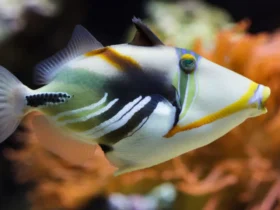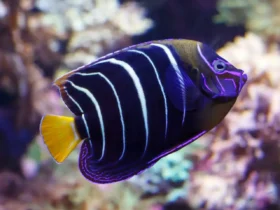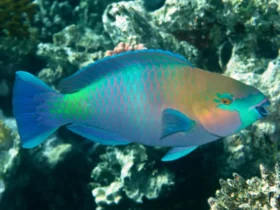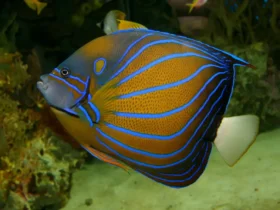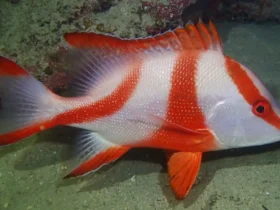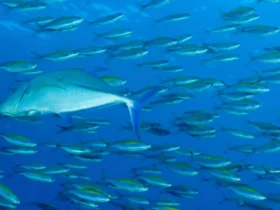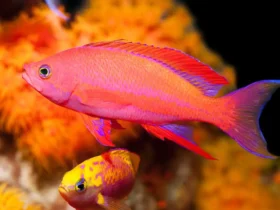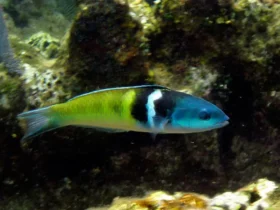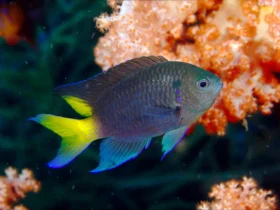Beneath the sunlit waters of tropical coral reefs, a vibrant and ecologically important fish glides through the coral branches—the Rainbow Parrotfish (Scarus guacamaia). With its dazzling colors, unique beak-like mouth, and crucial role in reef ecosystems, this magnificent fish captures the attention of snorkelers and divers alike. Join us as we explore the captivating world of the Rainbow Parrotfish, unraveling its appearance, behavior, habitat, and ecological significance.
Rainbow Parrotfish images
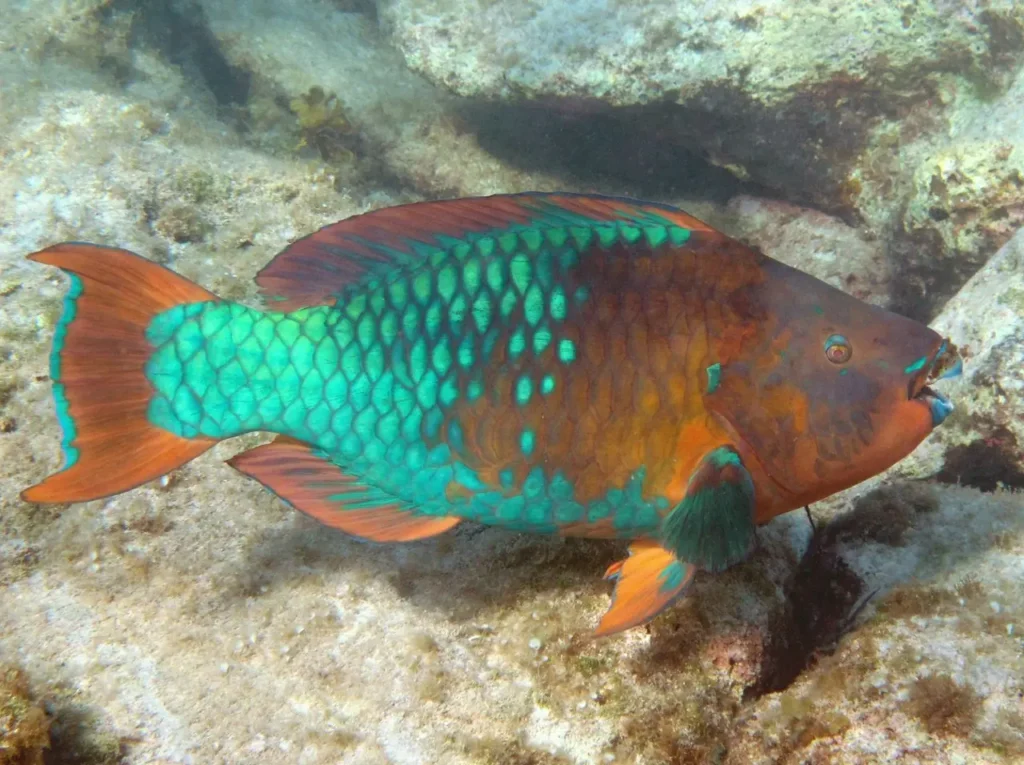
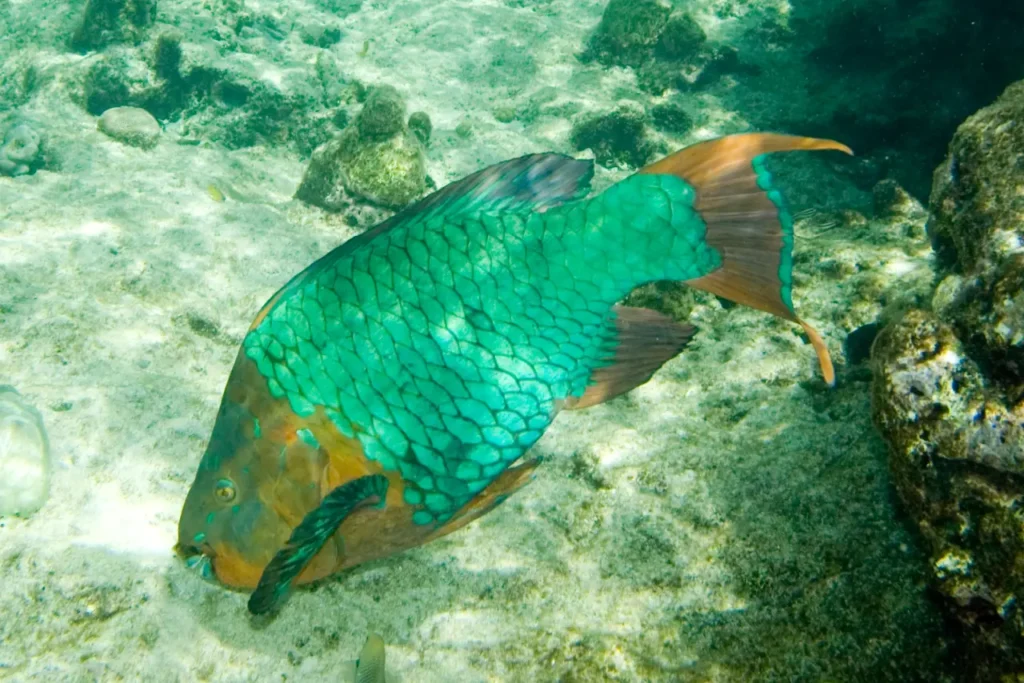
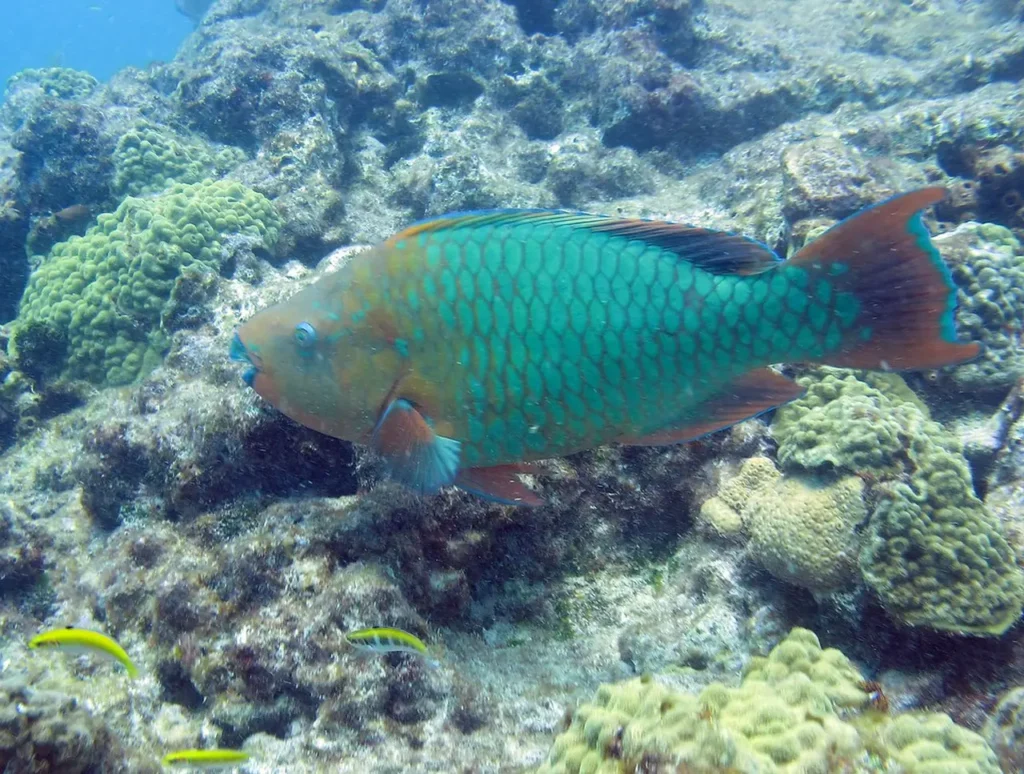
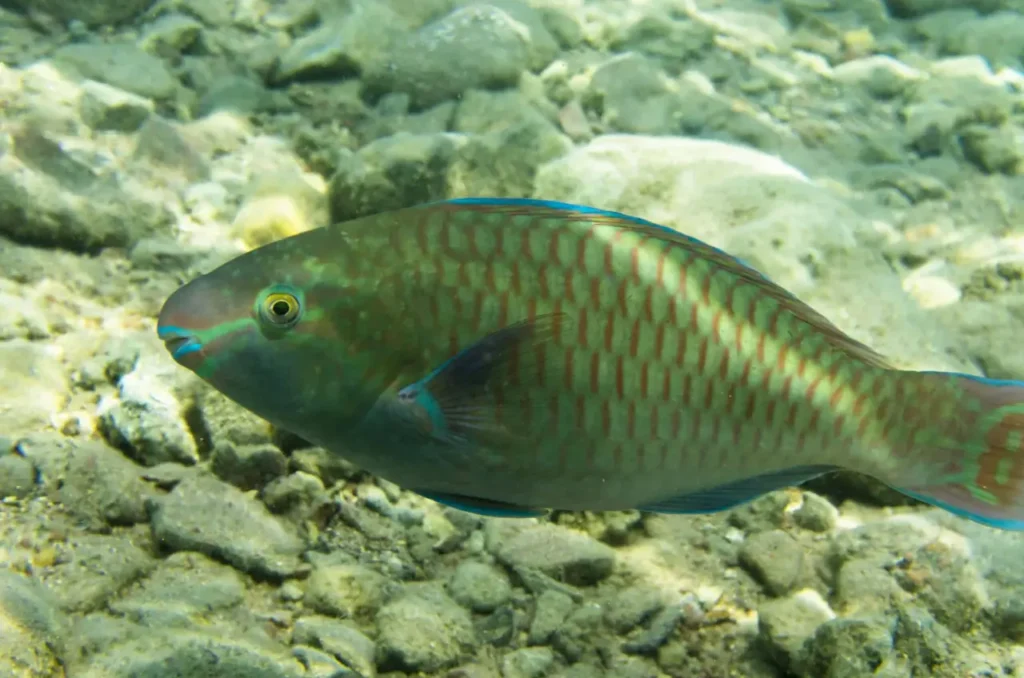
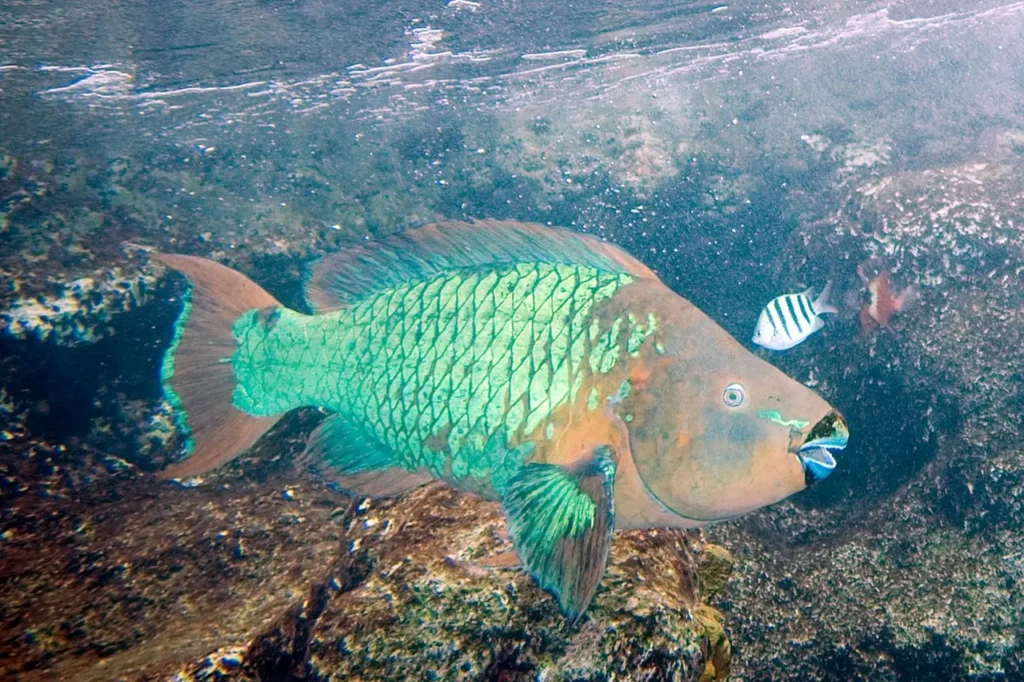
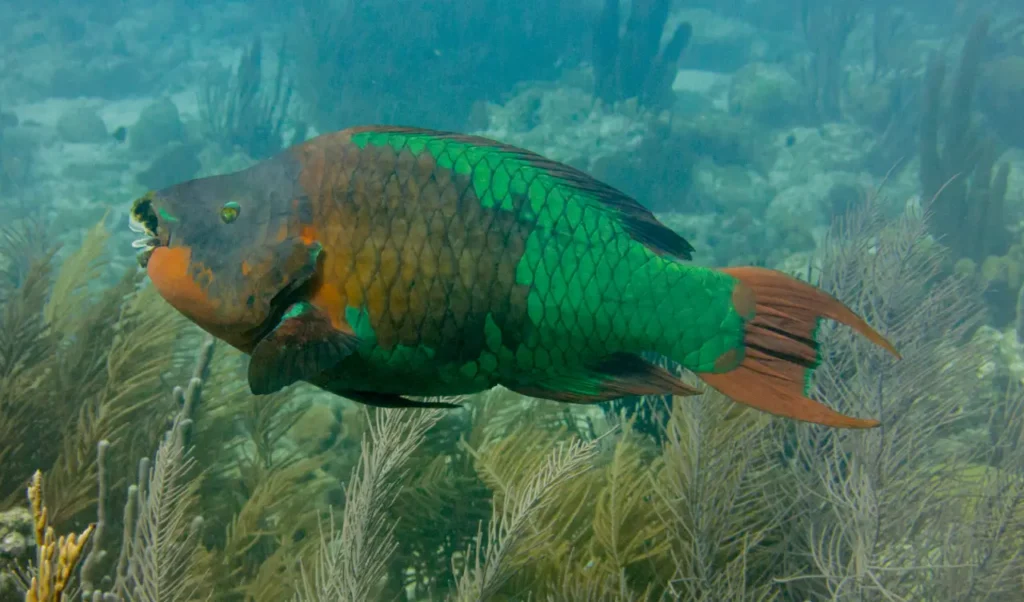
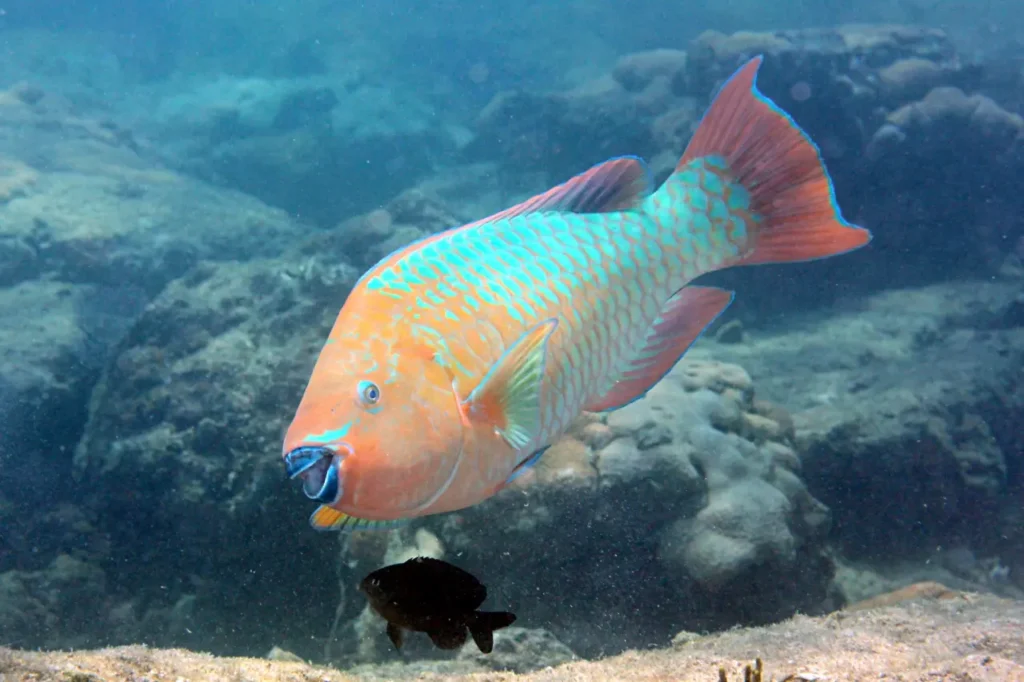
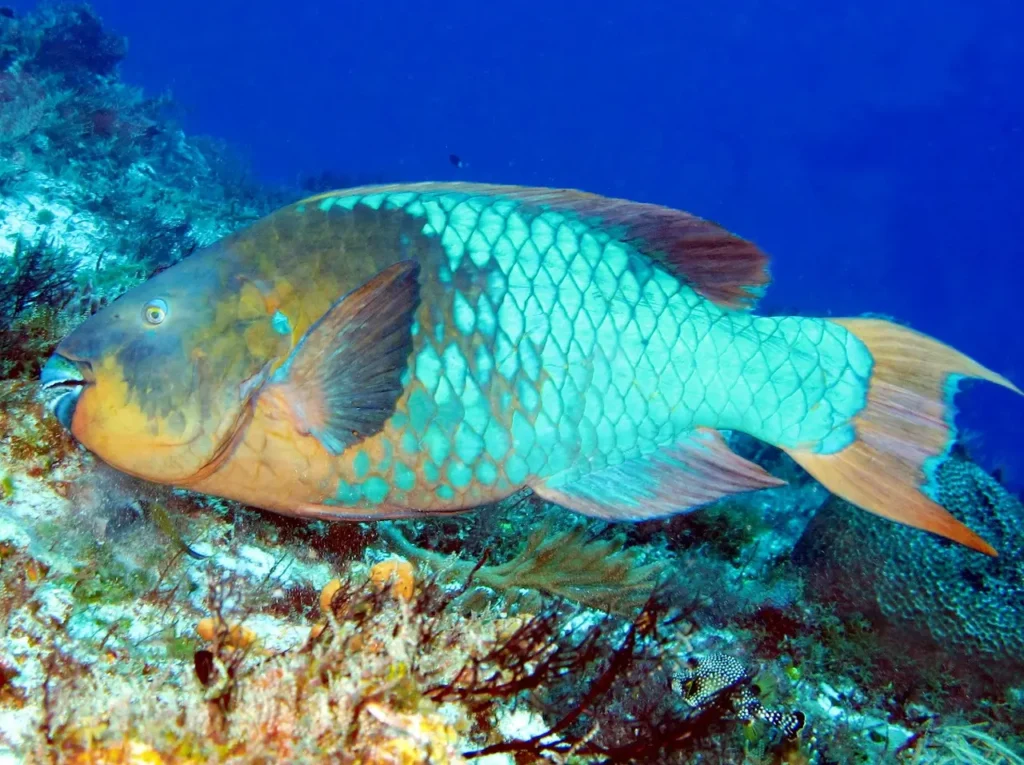
Appearance and Distribution
The Rainbow Parrotfish is a large species that can reach lengths of up to 1.2 meters (4 feet). It showcases an array of vibrant colors, including shades of green, blue, yellow, and purple. The male fish often exhibit more vibrant colors compared to females. One of the distinguishing features of the Rainbow Parrotfish is its beak-like mouth, which is fused teeth that resemble a parrot’s beak.
These parrotfish species are found in the warm tropical waters of the western Atlantic Ocean and the Caribbean Sea. They inhabit coral reefs, rocky areas, and seagrass beds in these regions, where they play a crucial role in maintaining the health of the reef ecosystem.
Behavior and Feeding Habits
Rainbow Parrotfish are herbivores and primarily feed on algae that grow on coral reefs. Their unique beak-like mouth allows them to scrape and chew algae from the coral surfaces. As they feed, they inadvertently consume small fragments of coral, which they later excrete as fine sand, contributing to the formation of sandy beaches and the overall process of bioerosion.
To protect themselves during the night and while resting, Rainbow Parrotfish build a mucus cocoon around their bodies, which helps mask their scent and keep them safe from predators.
Ecological Significance
Rainbow Parrotfish play a critical role in the health and functioning of coral reef ecosystems. By grazing on algae, they prevent the overgrowth of algae that can smother coral and hinder their growth. Their feeding activities help maintain the delicate balance between coral and algae, allowing corals to thrive and reefs to flourish. Additionally, the sand produced from their digestion contributes to the formation of new habitats and helps replenish eroded beaches.
Conservation and Threats
Rainbow Parrotfish, like many reef inhabitants, face numerous threats to their survival. Overfishing, habitat degradation, pollution, and climate change all pose significant challenges to their populations and the health of coral reefs. Protecting coral reefs, implementing sustainable fishing practices, and reducing pollution are crucial steps in preserving these majestic fish and the delicate balance of the reef ecosystem they inhabit.
Appreciating Nature’s Colorful Guardians
The Rainbow Parrotfish, with its vibrant colors and crucial ecological role, stands as a guardian of the coral reefs. Its grazing activities help maintain the delicate balance of the reef ecosystem, ensuring the survival of both corals and other reef organisms.
By valuing and protecting the coral reefs that the Rainbow Parrotfish calls home, we not only safeguard the survival of this magnificent fish but also contribute to the preservation of one of the Earth’s most biodiverse and stunning habitats. Let us appreciate and celebrate the presence of these colorful guardians, working together to ensure the preservation and thriving of coral reefs for generations to come.
